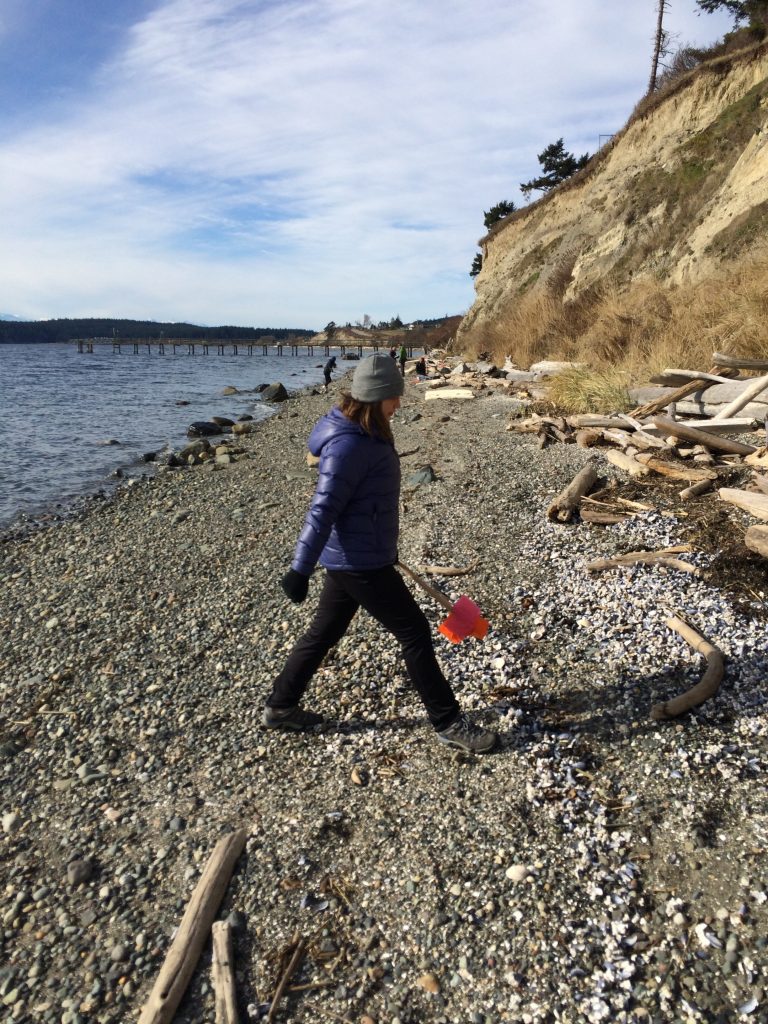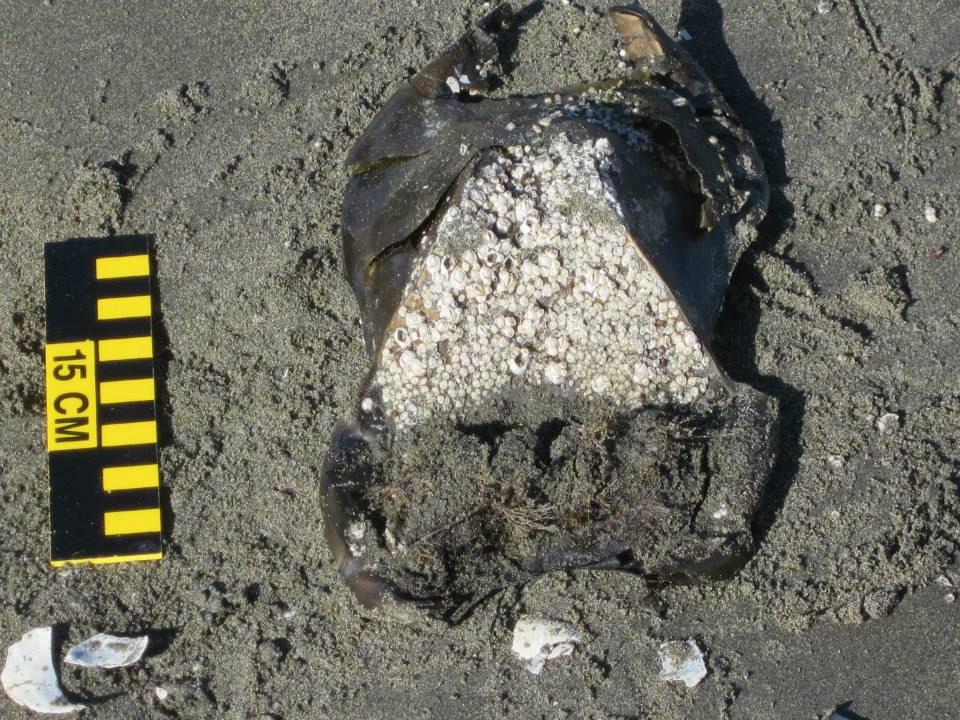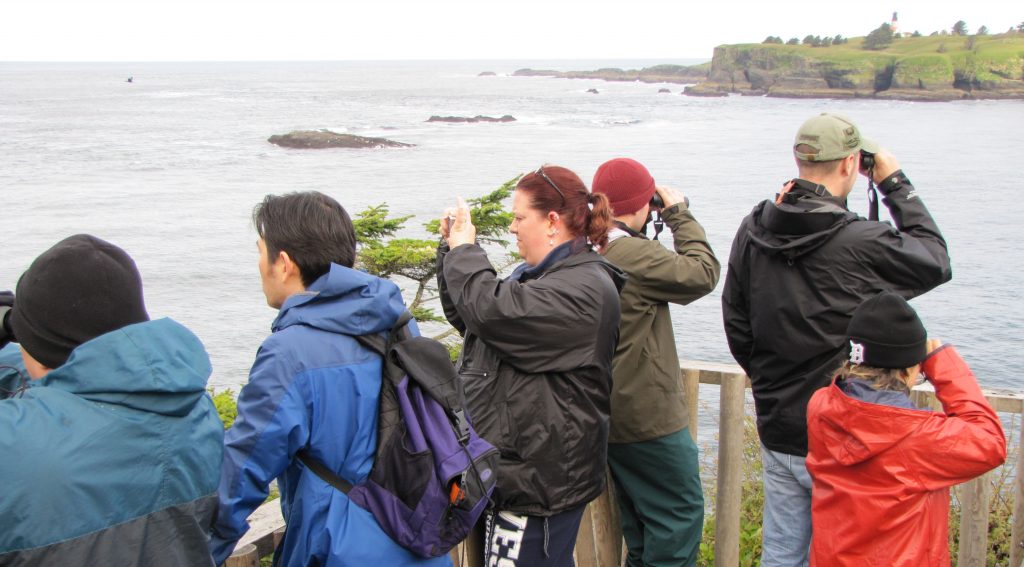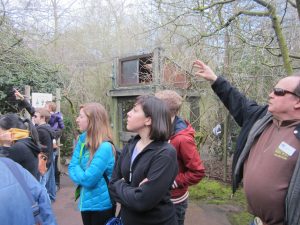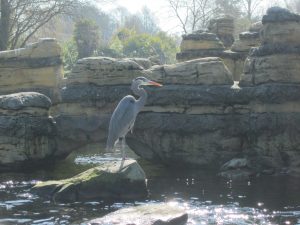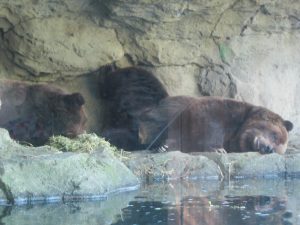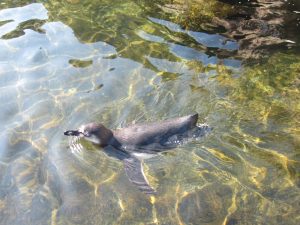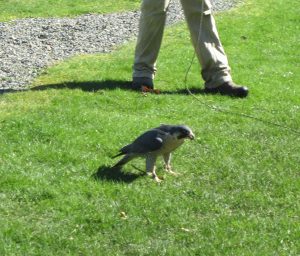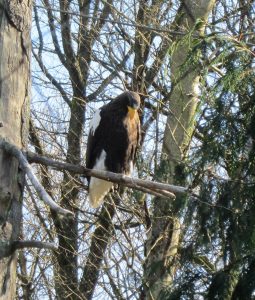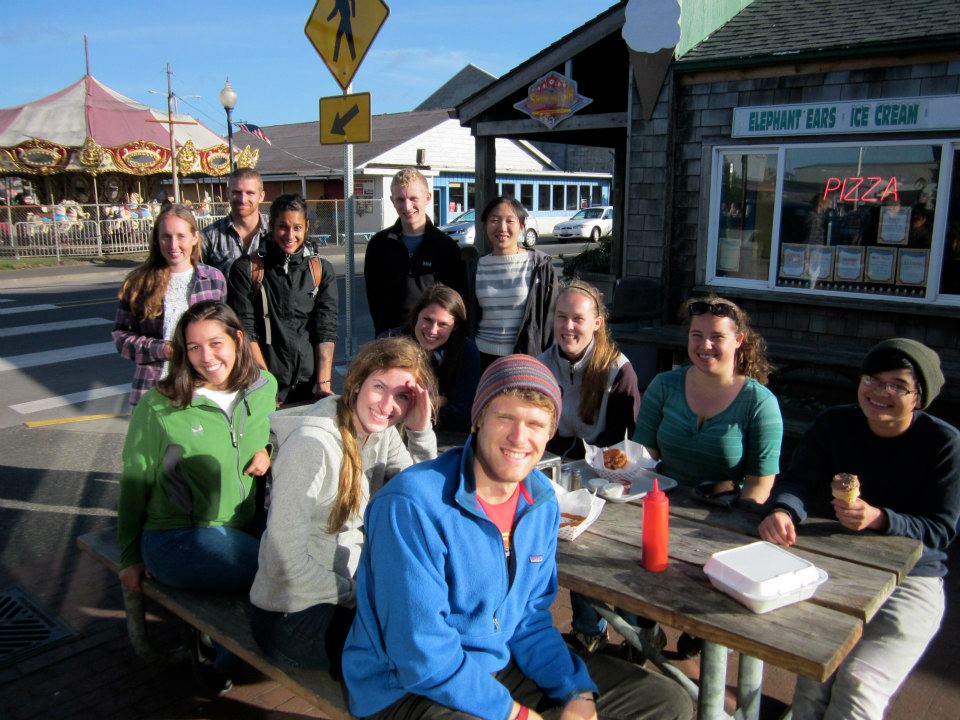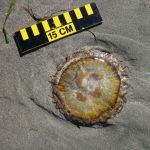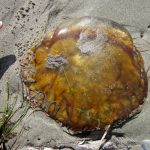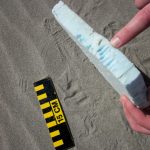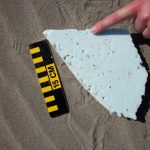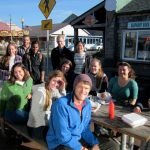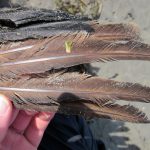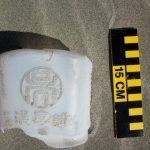This winter, COASST marine debris student interns embarked on several field trips across Washington to develop and refine a preliminary protocol for the new marine debris program. Interns this quarter included a photo team, Abby and Jessica, and a field team, Angeline and Kaili.
Reports from the field:
A total of 14 beaches so far, from Deception Pass to Ocean Shores! Discovery Park was our first stop, to trial the small debris survey methods – lots of beach glass at both this site and Alki Beach.

Kaili (left) and Abby (right) use a 1 meter quadrat (i.e. square) to define the search area for small marine debris at Discovery Park (Seattle).
Together with service learning students Christie and Yi, we visited Whidbey Island beaches Ala spit, Penn Cove, Joseph Whidbey State Park, Fort Casey, and Useless Bay. The physical differences between these five sites was quite surprising (substrate, wood, wrack, bluff, dunes, exposure) given they’re all within a few kilometers of each other. Special thanks to COASSTers David and Candace, who oriented us to their beaches and shared some (much needed) chocolate!
From the Puget Sound, we ventured to Ocean Shores to check out North Jetty and South Taurus beaches. Super wide, sandy beaches made the marine debris surveys much slower than those in Puget Sound.
The following week we returned to Ocean Shores to survey Damon Point and North Jetty to see if debris had shifted/accumulated/changed. We also visited the annual Beachcombers’ Fun Fair where we saw Heidi (COASST staff), and other marine debris enthusiasts, Curtis Ebbesmeyer and Alan Rammer. The collections and displays at the festival (that’s right, 44 exhibit categories, including “assembled unadorned pieces of driftwood”) helped us identify many objects we’ve been seeing in COASSTer photos and on our beach surveys!
Out at Damon Point, we almost lost our small debris surveyors (and equipment!) to a rogue wave. For the rest of the trip, we trekked all the way around the perimeter of Damon Point looking for particularly complex/interesting items to add to our marine debris teaching collection. Where did we find the most stuff? At the very tip! (fingers/points/spits tend to snag debris and birds – just ask the folks at Ediz Hook or Dungeness Spit).
During spring and summer quarters, we’ll continue to test and refine the marine debris monitoring protocol, getting it ready for Prime Time!

